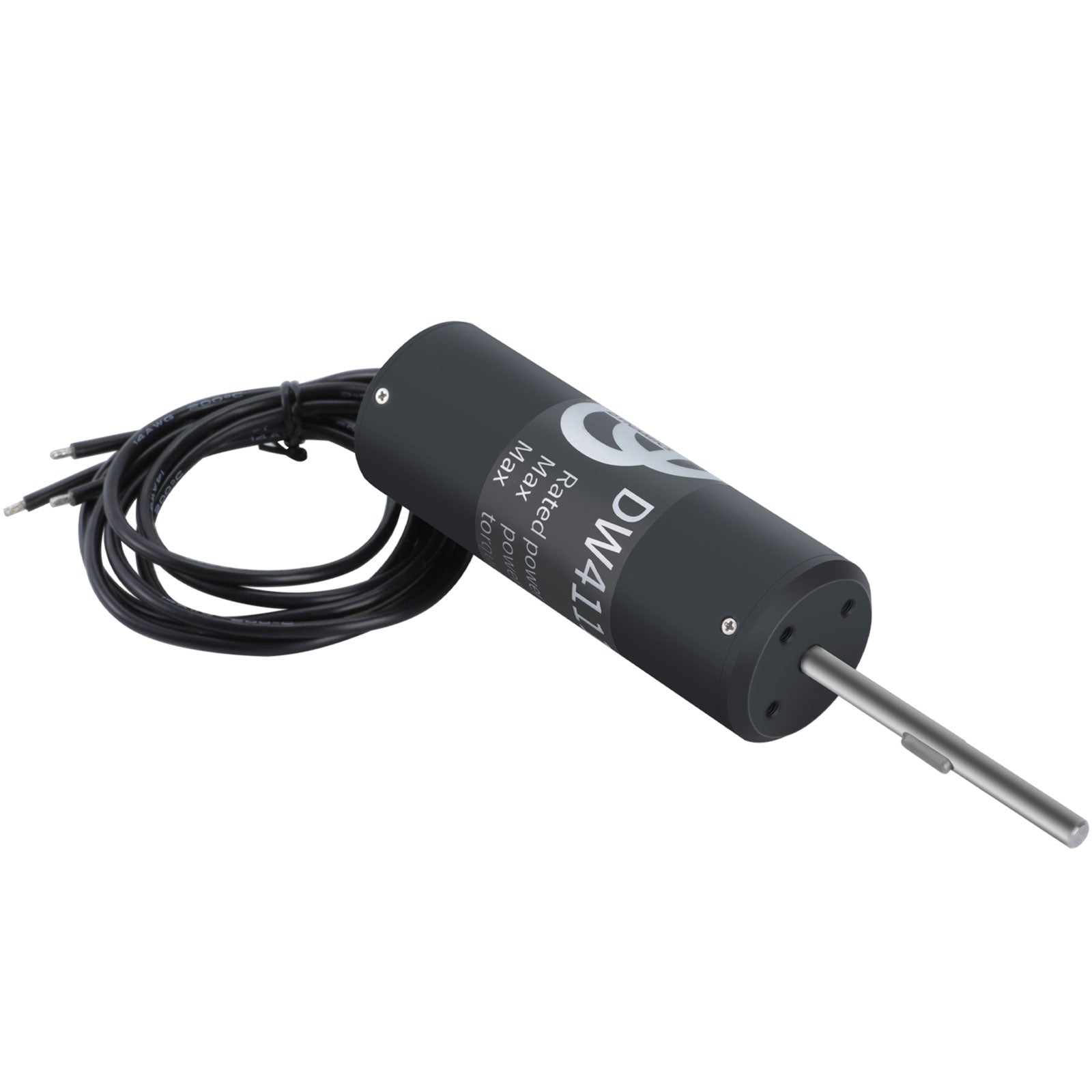
DW41115 3500W IP68 Waterproof Brushless Motor | 36V-62V for ROV/AUV/Marine
Customization Service
We are the OEM ODM manufacturer. For bulk orders and custom solutions, please contact us at official@hobbywater.com
When will I get my order?
We prioritize fast order processing. For in-stock items, orders placed before 4:00 PM (Beijing Time) will be shipped the same day. Standard orders typically ship within one week, while customized orders require approximately 15-30 business days for production and delivery. Delivery times may vary under special circumstances.
Shipping Methods
We ship to most countries worldwide. However, please ensure compliance with your local import regulations.
- For the USA: We offer tax-inclusive shipping options. Expedited orders are shipped via DHL, UPS, or FedEx. Note: DHL does not allow undervaluation.
- For other countries: Tax-inclusive shipping is available upon request. Otherwise, orders will be shipped via 4PX by default.
For specific shipping requirements, please contact us in advance.
High-Performance DW41115 Waterproof Motor
Powering Innovation Beneath the Surface
Unmatched Underwater Performance
The DW41115 sets new standards for waterproof motor technology, delivering 1800W-3500W of reliable power for demanding underwater applications. With multiple KV options and an IP68 waterproof rating, this motor excels where others fail.
Key Features:
· KV Options: 200KV, 235KV, 280KV, 350KV
· Voltage Range: 36V-62V
· Max Current: 57A-97A
· Power Output: 1800W-3500W
· Speed Range: 3300RPM-12500RPM
· Torque: 1.8N.M
· Max Torque: 3.5N.M
· Pole: 6 Grade
· Insulation Class: F Grade
· Waterproof Rating: IP68
· Weight: 700g
Perfect for exploration, filming, or scientific research, the D41115 waterproof motor is a reliable and high-performance choice.
Ideal Applications
Underwater Robotics
ROV/AUV propulsion systems
Underwater inspection drones
Marine research equipment
High-Performance Marine
Electric jetboard drives
Submersible pump systems
Underwater scooter propulsion
Specialty Industrial
Offshore monitoring devices
Underwater welding equipment
Deep-sea exploration tools
Why Professionals Choose DW41115?
Proven Reliability in saltwater environments
Precision Engineering for smooth operation
Custom Configuration options available
Ready to Power Your Project?
Contact our engineering team for:
→ Custom KV configurations
→ Bulk order pricing
→ Technical consultation
Thruster Safety: Quick Guide
1. For Your Safety:
- Keep Clear: Never put hands, feet, or anything near the propeller when it's plugged in. It can spin without warning and cause injury.
- No Water, No Power: Do not run the thruster in air for more than 10 seconds. It needs water to cool itself or it will break.
2. For The Thruster's Safety:
- Check Seals: Always check that the rubber O-rings are clean, greased, and undamaged before putting it in water.
- Avoid Debris: Keep it away from weeds, sand, and plastic bags. These can jam and break the propeller.
- No Regular Glue: Do not use normal threadlocker (screw glue) on any screws. It will crack the plastic body. Only use a kind that is safe for polycarbonate.
3. Simple Rules:
- Test First: Always test in a bucket or pool before going to open water.
- Rinse After Use: Always rinse with fresh water after use, especially in saltwater.
- Store Safely: Keep it in a case to protect it from bumps and dust.
Thruster Propeller Guide
1. Two Propeller Types:
- You get two propellers: one labeled "CW" (spins clockwise) and one labeled "CCW" (spins counterclockwise).
2. How Thrust Works:
- Forward Thrust (Recommended):A CW propeller pushes best when spinning clockwise.A CCW propeller pushes best when spinning counterclockwise.✅ Use this for maximum power and efficiency.
- Reverse Thrust:Both can also spin the opposite way to push backwards.⚠️ This works but is weaker and less efficient.
Quick Tip: Always check the label (CW/CCW) to make sure you have the right propeller installed for the direction you want to go. For the strongest push, use forward thrust.
What You Need to Run a Thruster?
The Thruster: The main unit, which contains a brushless DC motor.
- Power Source: A battery pack or power supply.
- A Controller: Something to tell it how fast and which way to spin (e.g., a remote control).
How to Connect It:
- If your thruster has a built-in ESC:
You can often connect it directly to a standard PWM receiver. - Important Note on Power:
If your receiver or ESC does not have a BEC (Built-in Eliminator Circuit) to power itself, you will need to add a separate BEC module. This provides the necessary power for the electronics.
Thruster making strange sound,broken?
It's normal for our thrusters to be loud.They use plastic bushings, so small movements between parts can cause sound. This noise is greatly reduced underwater, as water lubricates and cools the system.Never run them dry for more than a few seconds—it can permanently damage the bearings. Every thruster is tested to work properly.








